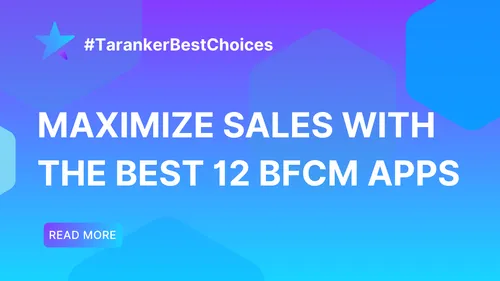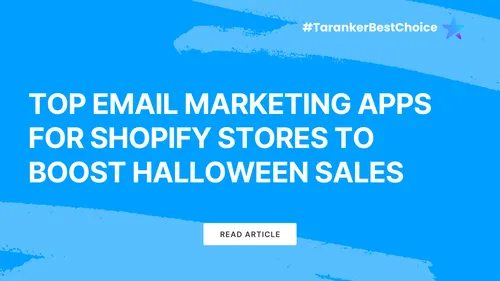In the dynamic world of e-commerce, understanding your market is crucial for success. For Shopify merchants and online retailers, conducting thorough market research can provide valuable insights into customer behavior, industry trends, and competitive landscapes. This guide delves into effective strategies for conducting market research, explores various types, and provides practical examples tailored for e-commerce businesses.
Understanding Market Research

Market research involves systematically gathering, analyzing, and interpreting information about a market, including data about potential customers and competitors. This process helps businesses identify market opportunities, assess the viability of new products or services, and develop effective marketing strategies.
Key Objectives of Market Research:
-
Identify Target Audiences: Understand the demographics, preferences, and behaviors of potential customers.
-
Analyze Market Trends: Stay informed about industry developments and emerging trends.
-
Evaluate Competition: Assess competitors' strengths and weaknesses to identify market gaps.
-
Inform Business Decisions: Use data-driven insights to guide product development, pricing, and promotional strategies.
Types of Market Research

Market research can be categorized into several types, each serving distinct purposes.
1. Primary Research
Primary research involves collecting original data directly from sources. This hands-on approach provides current and specific insights tailored to your business needs.
Methods:
-
Surveys and Questionnaires: Gather quantitative data on customer preferences and satisfaction.
-
Interviews: Conduct one-on-one discussions to delve deeper into individual experiences and opinions.
-
Focus Groups: Facilitate group discussions to explore collective attitudes and perceptions.
-
Observations: Monitor customer behaviors in real-time settings to gain contextual insights.
Example: A Shopify merchant launching a new line of eco-friendly apparel might distribute online surveys to existing customers to gauge interest and gather feedback on proposed designs.
2. Secondary Research
Secondary research involves analyzing existing data collected by other organizations. This approach is cost-effective and provides a broad understanding of the market landscape.
Sources:
-
Industry Reports: Access comprehensive analyses of market trends and forecasts.
-
Academic Journals: Review scholarly articles for theoretical insights and empirical data.
-
Government Publications: Utilize official statistics on demographics and economic indicators.
-
Competitor Websites: Analyze competitors' offerings, pricing, and customer reviews.
Example: An online electronics retailer might study industry reports to understand the growth trajectory of smart home devices before expanding their product range.
3. Qualitative Research
Qualitative research focuses on understanding the underlying reasons and motivations behind consumer behaviors. It provides depth and context to quantitative findings.
Methods:
-
In-Depth Interviews: Explore personal experiences and attitudes in detail.
-
Ethnographic Studies: Immerse in the customer's environment to observe behaviors and interactions.
-
Open-Ended Surveys: Allow respondents to express thoughts in their own words, revealing nuanced insights.
Example: A beauty products e-commerce store might conduct in-depth interviews to understand customers' skincare routines and preferences, informing product development and marketing messages.
4. Quantitative Research
Quantitative research involves collecting numerical data to identify patterns and predict behaviors. This type of research is essential for statistical analysis and generalizing findings to larger populations.
Methods:
-
Structured Surveys: Use closed-ended questions to gather measurable data.
-
Analytics Tools: Employ web analytics to track user behavior and engagement metrics.
-
Sales Data Analysis: Examine transaction records to identify purchasing trends and peak sales periods.
Example: An online bookstore might analyze sales data to determine which genres are most popular among different age groups, aiding in targeted marketing efforts.
Steps to Conduct Effective Market Research

Implementing a structured approach to market research ensures comprehensive and actionable insights.
1. Define Your Objectives
Clearly articulate what you aim to achieve with your research. Objectives could range from understanding customer satisfaction levels to assessing the demand for a new product.
Example: A Shopify merchant wants to determine the potential success of a subscription box service for their handmade jewelry.
2. Identify Your Target Audience
Determine who your current and potential customers are. Consider demographics, psychographics, and purchasing behaviors.
Example: The jewelry merchant identifies their target audience as women aged 25-40 who value artisanal craftsmanship and subscribe to fashion accessories services.
3. Choose the Appropriate Research Methodology
Select methods that align with your objectives and resources. A combination of primary and secondary research often yields the best results.
Example: The merchant decides to conduct online surveys (primary research) and analyze fashion industry reports (secondary research) to gather comprehensive insights.
4. Collect and Analyze Data
Gather the data systematically and employ analytical tools to interpret the findings. Look for patterns, correlations, and actionable insights.
Example: Survey responses reveal a strong interest in monthly jewelry subscriptions, and industry reports indicate a growing trend in personalized accessories.
5. Apply Insights to Business Decisions
Once you have collected and analyzed your market research data, use it to make informed business decisions. This can include refining your product offerings, optimizing pricing strategies, or improving customer experience.
Example:
After conducting surveys and analyzing competitor pricing, a Shopify jewelry merchant decides to launch a limited-edition subscription box featuring customizable jewelry pieces. Market research insights help determine the right pricing strategy and promotional approach.
Best Tools for Market Research

E-commerce merchants can leverage various tools to conduct efficient market research. Here are some popular ones:
1. Google Trends
✔ Helps track search trends and seasonal demand.
✔ Useful for identifying emerging product opportunities.
🔗 Visit Google Trends
2. Shopify Analytics
✔ Provides insights into store performance, sales data, and customer behavior.
✔ Helps track conversion rates and best-selling products.
🔗 Available in Shopify Dashboard.
3. SurveyMonkey
✔ Conducts customer surveys and gathers feedback.
✔ Offers analytics tools for data interpretation.
🔗 Visit SurveyMonkey
4. SEMrush / Ahrefs
✔ Provides keyword research and competitor analysis for SEO optimization.
✔ Tracks website rankings and backlink profiles.
🔗 Visit SEMrush / Visit Ahrefs
5. Facebook Audience Insights
✔ Offers demographic and interest data on potential customers.
✔ Helps refine targeted ad campaigns.
🔗 Available in Facebook Ads Manager.
Final Thoughts: Why Market Research is Essential for E-commerce Success
Effective market research provides Shopify merchants with data-driven insights that lead to better business decisions, improved customer satisfaction, and increased revenue. By understanding customer behavior, industry trends, and competitors, e-commerce businesses can create targeted marketing campaigns and develop products that truly resonate with their audience.
Key Takeaways:
✔ Use a mix of primary and secondary research for accurate insights.
✔ Identify your target audience to tailor marketing strategies.
✔ Leverage analytics tools to monitor and refine business performance.
✔ Regularly update your research to stay ahead of market trends.
📌 Next Steps: Start by conducting a simple survey or analyzing Google Trends for your niche. Apply these insights to your Shopify store strategy for long-term success!
Frequently Asked Questions (FAQs)
1. How often should I conduct market research?
✔ Ideally, every 6–12 months or whenever launching new products, expanding markets, or adjusting pricing strategies.
2. What is the best free tool for Shopify market research?
✔ Google Trends and Facebook Audience Insights provide valuable free data for identifying trends and customer preferences.
3. Can I conduct market research without surveys?
✔ Yes! Use Google Analytics, Shopify Analytics, competitor research, and social listening to gather insights.
4. What is the difference between primary and secondary research?
✔ Primary research is data collected directly (e.g., surveys, interviews).
✔ Secondary research is data from existing sources (e.g., reports, competitor websites).
5. How does market research improve conversion rates?
✔ Helps identify pain points, optimize pricing, and personalize marketing—leading to higher customer satisfaction and sales.













